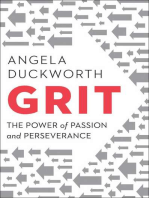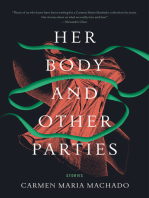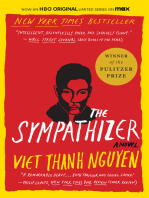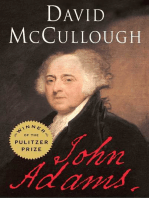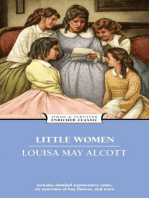0 ratings0% found this document useful (0 votes)
9 viewsPRFINALS
PRFINALS
Uploaded by
B17 Santos, Israel C.Copyright:
© All Rights Reserved
Available Formats
Download as PDF or read online from Scribd
PRFINALS
PRFINALS
Uploaded by
B17 Santos, Israel C.0 ratings0% found this document useful (0 votes)
9 views29 pagesCopyright
© © All Rights Reserved
Available Formats
PDF or read online from Scribd
Share this document
Did you find this document useful?
Is this content inappropriate?
Report this DocumentCopyright:
© All Rights Reserved
Available Formats
Download as PDF or read online from Scribd
Download as pdf
0 ratings0% found this document useful (0 votes)
9 views29 pagesPRFINALS
PRFINALS
Uploaded by
B17 Santos, Israel C.Copyright:
© All Rights Reserved
Available Formats
Download as PDF or read online from Scribd
Download as pdf
You are on page 1of 29
Research Framework
What I Need to Know
As you begin writing your research project, you must consider the framework that is
suitable for your study. What is a research framework? A research framework illustrates the
structure or blueprint of the research plan and helps the researcher formulate relevant
research questions.
The framework consists of the key concepts and assumed relationships of the research
project. It is normally used as a guide for researchers so that they are more focused on the
scope of their studies. It can be presented using visual (diagrams, chart, etc.) and narrative
(paragraph stating the concepts and relationships of the study) forms.
Theoretical and Conceptual Framework
The types of research frameworks are classified as the theoretical and conceptual
frameworks. A theoretical framework is commonly used for studies that anchor on time-
tested theories that relate the findings of the investigation to the underpinning relevant theory
of knowledge. At the same time, a conceptual framework refers to the actual ideas, beliefs,
and tentative theories that specifically support the study. It is primarily a conception or model
of what is out there that the researcher plans to study.
Similarities of the Theoretical and Conceptual Framework
The following are the similar characteristics of Theoretical and Conceptual Framework:
Provide an overall view of the research study;
Anchor a theory that supports the study;
Guide in developing relevant research questions/objectives;
Help justify assumptions/hypothesis;
Aid in choosing appropriate methodology;
Help in gathering and interpreting data and
Guide in identifying possible threats to validity.
NOAPen=
Differences between the Theoretical and Conceptual Framework
Theoretical framework Conceptual framework
Scope * Broader * Narrowerffocused
* Can be used in different studies | * Directly related to a specific
study
Focus of Content = The particular theory used| + Set of relaied concepts to a
already in the field specific study
Number of Theories ‘* Presents one theory atatime | May synthesize one or more
theories
Time of Development | + Already existing before the | Develop while planning and
conduct of the stud) writing a specific research
These are the following guidelines and strategies of choosing and developing a Research
Framework according to Barrot (2017, p.73).
Theoretical framework
Conceptual framework
Understand the variables included in your
study as well as their relationship with one
another.
Review the existing literature related to your
research topic.
Using the information that you have
gathered from the literature, look for
possible theories that may potentially
account for the expected results of your
research topic,
From these theories, select the one that is
most relevant to your study and can provide
a blueprint for your research.
Identify the key concapts in your study by
referring to your research questions or
objectives.
Search for existing theories that incorporate
the same concept and look into their
relationships with one another.
Using the existing theories as a guide, plot
your conceptual framework using a concept
map.
In case that there are concepts not covered
by the selected theories. Incorporate them
into your framework. However, make sure
that you are incorporating this concept into
your framework because it is necessary for
your paper.
+ After completing the initial draft of your
conceptual framework, write a narrative
explanation of each concept and how each
of them relates to one another. Again, there
should be a basis for the relationship
between the concepts being incorporated.
+ Refer once again to your research
questions. Check if the conceptual
framework is aligned with them.
+ Note that the process of creating a
conceptual framework is developmental.
This means that it may stil be refined or
changed as you read more literature and
look into more theories.
+ Insome cases, the research hypothesis is
presented at the end of the conceptual
framework.
Concept Map
Aconcept map is a visual representation of information that helps show the relationship
between ideas. Concept maps begin with the main topic and then branch out into sub-topics,
reflecting the connection of all the elements in the study. It can also provide and organize new
ideas.
It is composed of different figures such as lines, circles, boxes, and other marks or
symbols which represent the elements of your research. It can take the form of charts, graphic
organizers, tables, flowcharts, Venn Diagrams, timelines, or T-charts. Concept map arranges
related ideas in a hierarchy. You start broad, and the sub-topics will get more and more
specific. It also helps you in formulating a specific topic from the general or the main idea with
significant connections of information. In other words, understanding the big picture makes
the details more significant and easier to comprehend.
2
Concept Map
Aconcept map is a visual representation of information that helps show the relationship
between ideas. Concept maps begin with the main topic and then branch out into sub-topics,
reflecting the connection of all the elements in the study. It can also provide and organize new
ideas.
It is composed of different figures such as lines, circles, boxes, and other marks or
symbols which represent the elements of your research. It can take the form of charts, graphic
organizers, tables, flowcharts, Venn Diagrams, timelines, or T-charts. Concept map arranges
related ideas in a hierarchy. You start broad, and the sub-topics will get more and more
specific. It also helps you in formulating a specific topic from the general or the main idea with
significant connections of information. In other words, understanding the big picture makes
the details more significant and easier to comprehend.
2
Concept maps are very useful for researchers and readers who understand better
visually. With the proper connection of lines and linking arrows to shapes and other symbols
representing your concepts about the research, the readers can visualize a comprehensive
picture of your study.
However, in the concept map, you are not yet actually researching your study. It is
developing or creating your plan or blueprint so that you will be guided on the flow and direction
of your research study. And that includes your research questions, variables, and
methodology. It means that you are just gathering and soliciting ideas on what you could learn
about your chosen topic.
Before creating your conceptual framework, you have to understand first the different
variables of your study. Although these were already discussed in the previous module for the
purpose of utilizing it in your framework, an in-depth concept is a need.
The Input-Process-Output Model
The Input-Process-Output Model (IPO) is a conceptual paradigm which indicates the
inputs, required process, and the output. This approach is seated on the premise of acquiring
essential information by converting inputs into outputs through the required processing steps
in obtaining the result. The IPO Model is also referred to as a functional model that is usually
used in action research where an intervention or solution is necessary to solve the identified
problem.
The Input is usually the independent variable of the study. Meanwhile, the Process is the
intervention or solution consist of the instruments and analyses used to acquire the result.
Lastly, the Output is the findings or outcome of the interventions being made to solve the
identified problem.
Common Example of Conceptual Framework
As you read on different research studies, the common conceptual frameworks used
of most studies are the independent and dependent variable model and the input, process,
and output model.
A. Independent Variable - Dependent Variable Model (IV-DV)
For example:
Independent Variable Dependent Variable
HoursofStudy |————}_ Academic Performance
Figure 1. The schematic diagram of the Independent and Dependent Variables of the Study.
This conceptual framework shows the independent and dependent variables of the
study. It is presumed that the more number of hours a student prepares for the exam, the
higher would be the expected academic performance.
B. The Input —- Process - Output Model (IPO)
For example:
Input Process Output
Socio-demographic
Profile
1.Age
2. Sex
3. Marital Status
1. Profiling
2.Survey
Questionnaire
3. Data Analysis
Proposed
Intervention
Program
Food Safety Profile
1. Knowledge
2. Attitude
3. Practices
Figure 2. The schematic diagram of the Input, Process, and Output Approach of the Study.
This conceptual framework shows the input, process, and output approach of the
study. The input is the independent variable, which includes the socio-demographic and food
safety profile of the respondents. The process includes the tools and analyses in gathering
the data, while the output is the outcome based on the results of the study.
What Is It
Example 1
Research Title: Effect of Mentoring Program on Academic Performance among Senior
High School Students
Conceptual Paradigm:
Independent Variable Dependent Variable
Effect of Mentoring Academic
Program Performance
In this conceptual framework, it is expected that the students who underwent the
mentoring program will have better academic performance than those who did not.
Example 2
Research Title: Awareness on the Safety Precaution against COVID 19 among the
Senior Citizens who are living in the Home Care Facilities: Basis for a Proposed
Intervention Program
Conceptual Paradigm:
INPUT PROCESS OUTPUT
Socio-demographic Profile
1. Age
2. Sex
3. Marital Status 1. Profiling
4. Educational 2. Survey Tool
Attainment 3. Data Gathering Bicposed
Safety Precaution Awareness |» 4, Data Analysis Intervention
Against COVID 19 and Interpretation rogram
1, Causes
2. Management
3. Prevention
In this conceptual framework, the input is the baseline information about the
respondents. Necessary steps and procedures are to be implemented to obtain the vital data
as a result and findings of the research. Furthermore, these findings will be the basis for a
proposed intervention program as the output of the study.
Conceptual Framework
The conceptual framework shows the process that will be ce in the study tt
Consists of ideas and theories that are directly related to the study. It is ure that the
researcher believes can best explain the natural progression of the phenomenon to be Studie
(Camp, 2001). It is linked with the concepts, empirical research, and important theories Used
in promoting and systemizing the knowledge espoused by the researcher (Peshkin, 1993).
The following are the steps in writing the conceptual framework:
1. Write all input (the things done prior to research), process (the Steps to be done),
and output (expected product).
2. Present in paradigm and show the connections. You may include external terms.
3. Discuss the connections of all the terminologies in paragraph form.
46 PRACTICAL RESEARCH 2
What | Need to Know
As you begin writing your research project, you must consider the framework that
is suitable for your study. What is a research framework? A research
framework illustrates the structure or blueprint of the research plan and helps the
researcher formulate relevant research questions.
The framework consists of the key concepts and assumed relationships of the
research project. It is normally used as a guide for researchers so that they are more
focused on the scope of their studies. It can be presented using visual (diagrams, chart,
etc.) and narrative (paragraph stating the concepts and relationships of the study) forms.
Theoretical and Conceptual Framework
The types of research frameworks are classified as the theoretical and conceptual
frameworks. A theoretical framework is commonly used for studies that anchor on time-
tested theories that relate the findings of the investigation to the underpinning relevant
theory of knowledge. At the same time, a conceptual framework refers to the actual
ideas, beliefs, and tentative theories that specifically support the study. It is primarily a
conception or model of what is out there that the researcher plans to study.
Similarities of the Theoretical and Conceptual Framework
The following are the similar characteristics of Theoretical and Conceptual
Framework:
‘1. Provide an overall view of the research study;
2. Anchor a theory that supports the study;
3. Guide in developing relevant research questions/objectives;
4, Help justify assumptions/hypothesis;
5. Aid in choosing appropriate methodology;
6. Help in gathering and interpreting data and
7. Guide in identifying possible threats to validity.
Differences between the Theoretical and Conceptual Framework
Theoretical framework Conceptual framework
Scope e Broader * Narrower/focused
* Can be used in different © Directly related to a
studies specific study
Focus of Content e The particular theory e — Set of related
used already in the field concepts to a specific
study
Number of Theories |e Presents one theory ata May synthesize one
time or more theories
Time of e Already existing before Develop while
Development the conduct of the study planning and writing a
specific research
1
These are the following guidelines and strategies of choosing and developing a
Research Framework according to Barrot (2017, p.78).
Theoretical framework
Conceptual framework
e Understand the variables
included in your study as well as
their relationship with one
another.
@ Review the existing literature
related to your research topic
Using the information that you
have gathered from the literature,
look for possible theories that
may potentially account for the
expected results of your research
topic.
© From these theories, select the
‘one that is most relevant to your
study and can provide a
blueprint for your research.
Identify the key concepts in your
study by referring to your research
questions or objectives
Search for existing theories that
incorporate the same concept and
look into their relationships with one
another.
Using the existing theories as a
guide, plot your conceptual
framework using a concept map.
Incase that there are concepts not
covered by the selected theories.
Incorporate them into your
framework. However, make sure that
you are incorporating this concept
into your framework because it is
necessary for your paper.
After completing the initial draft of
your conceptual framework, write a
narrative explanation of each
concept and how each of them
relates to one another. Again, there
should be a basis for the
relationship between the concepts
being incorporated.
Refer once again to your research
questions. Check if the conceptual
framework is aligned with them.
Note that the process of creating a
conceptual framework is
developmental. This means that it
may still be refined or changed as
you read more literature and look
into more theories.
In some cases, the research
hypothesis is presented at the end of
the conceptual framework
Concept Map
Aconcept map is a visual representation of information that helps show the relationship
between ideas. Concept maps begin with the main topic and then branch out into sub-
topics, reflecting the connection of all the elements in the study. It can also provide and
organize new ideas
Focus
Significance of the Study
The significance of the study includes possible contributions of the research to the field
knowledge. In writing the significance of the study, list all beneficiaries of the Fesearch. Then,
discuss in two to three sentences the specific benefit they will get from the thesis. .
Scope and Delimitations
The scope presents the inclusions of the study, while delimitations present what are no,
Covered in the study or cannot be controlled for acceptable reasons. In writing the scope and
delimitations, discuss the scope and the limits or things not included in the research, Include
also a discussion on the scope and limit of the research instrument or the product of the
research.
® EXEMPLAR
Sample Significance of the Study
The researcher believed that the study is significant and noteworthy. Specifically, it is
beneficial to the following:
Students. The study could provide students more opportunities to love writing and delete
the notion that writing is dull as a field. This could also help them become more responsible for
their own learning by transforming them from being passive recipients of information to being
self-motivated, active meaning-makers, and expert learners.
Teachers. This study could be of great help to the teachers of writing, especially those
teaching in the senior high school level, for it would provide them with strategies related to the
new trends the curriculum offers.
Administrators. The results of this study could help administrators realize the need for
teachers to provide appropriate and new learning strategies to students in the field of writing,
specifically in the senior high schoo! level,
Education Officials and Policy Makers. This study could encourage officials in the
education sector to motivate education leaders to acknowledge the Project-Based Leaming
highlighting the Cognitivism and Social Constructivism in the teaching of academic writing.
Better yet, this research can encourage them to endorse a 21st century method of teaching,
especially in the senior high school level.
Curriculum Planners. The results of this study could provide curriculum planners with
the insights necessary for evaluating and monitoring the educational scheme or curriculum.
They may draw up plans to prepare teachers for a more active role in the improvement and
enhancement of the curriculum based on students’ needs.
Future Researchers. Through the results of the study, educational researchers may
guided and inspired to explore and study more about how to teach writing.
32 PRACTICAL RESEARCH 2
Scope and Delimitations
is study was conducted to test the effectiveness of the Project-Based Learning
in teaching English for Academic and Professional Purposes. It dwelled on the
topics: academic writing, particularly reaction, concept, and position papers among
de 12 students of Siena College of Taytay. The study was only limited to academic
oth the concepts and actual application.
reover, this study was limited only to the outputs of the two classes in the English for
ic and Professional Purposes of the Grade 12 level. Each class had 40 respondents.
idy was conducted during the first semester of academic year 2018-2019.
e pretests and posttests were administered to test the effectiveness of the strategy.
sts were a combination of knowledge and skills as well as actual academic writing tests.
| outputs done during the teaching-learning process were evaluated through the use of
cher-made analytic rubric. The purpose of using a rubric was to avoid biases. The rubric
bjective in nature; thus, the researcher and two other evaluators checked the Content,
nization, Vocabulary, Language Use, and Mechanics in the papers.
DEFINITION OF TERMS
The definition of terms must be listed alphabetically. Defining important terms is essential to
ensure a common understanding of key concepts and terminology is shared between the
dissertation author and his or her audience, particularly if the term is unusual or not widely known.
There are two ways of defining the key terms in the study:
a.
Conceptual Definition — the definition of terms is based on concepts of hypothetic ones
which are usually taken from dictionary, encyclopedia, published journals or books.
Operational Definition — the definition of terms is based on observable characteristics and
how it is used in the study. It is preferable when defining technical terms.
Guidelines in defining terms:
fl.
2;
3.
Only terms, words, or phrase which have special unique meaning in the study are defined.
Terms should be defined operationally, that is, how they are used in the study.
The researcher may develop his own definition from the characteristics of the term
defined.
Definitions may be taken from encyclopedias, books, magazines, newspaper articles,
dictionaries and other publications but researcher must acknowledge his sources.
Definitions should as brief, clear and unequivocal as possible.
Acronyms should always be spelled out fully especially if it is not commonly known or if it
is used for the first time.
SCOPE AND LIMITATION
This section is a description of what is included in the study and what is not included. The
population under study and the locale of the study should be described. It is important to narrow
down the research topic and limit the scope of the study. As Biay & Cortez (2017) asserts, “The
scope identifies the boundaries of the study in term of subjects, objectives, facilities, area, time
frame and the issues to which the research is focused.” On the other hand, the limitation is
delimiting a study by geographic location, age, sex, population traits and size, and the other similar
considerations. It is to make the study more feasible and identifies the limits of the study.
Sample phrases that help express the scope of the study:
The coverage of this study..........
The study consists of ..
The study covers the ..
This study is focus on.......
Sample phrases that expressed the limitations of the study
The study does not cover the......
The researcher limited this research to......
This study is limited to.........
Example:
The study shall only include children studying at the Sunday school of Beth Yaacov synagogue
in Makati City. This will include only children from ages five (5) to twelve (12), being the age when
Jewish children begin their religious education, and ending at the age when they become bar
mitzvah and bat mitzvah. Children from other Jewish communities in the country, like the “Bagel
Boys” in Pampanga or the recently established Chabad House also in Makati, are not included.
Children below the age of religious instruction (five years old) and beyond (twelve years old) are
not included. Attendees of the various adult classes held at the synagogue, are likewise not
included. (Guerrero, October 2011)
SIGNIFICANCE OF THE STUDY
This is a list of the people or institutions who will benefit from the study and how they will benefit
from the study. It encompasses the aims and objectives of the researcher hopes to achieve with
the research. The presentation of the significance of the study either in the inductive and deductive
perspective.
Example:
The study will provide some insights and information on the effect of watching Korean dramas on
housewives’ perception on marriage. Also, the useful and relevant information acquired from this
study will stimulate awareness on housewives on the possible effects the message weight after
their beliefs and attitudes.
Married couples. The study would be beneficial to them since they are married and they would
be able to understand each other more and be more aware of each other's feelings toward a
certain topic.
Future researchers. The study would serve as their reference in their research study which could
be beneficial and similar to this.
Housewives. Since they are the participants, this would help them to know more and be aware
in Korean dramas’ effects in their lives as well as their perception on marriage and family life.
(Arcibal, April 2011)
Definition of Terms
Y It explains the variables (terminologies) used in the study operationally or
conceptually.
www.shsph. blogspot.com
Definition of terms is essential to ensure a common understanding of key
concepts and terminology used in the study between the researcher and its
reader.
Y It helps both the researcher and its reader to have clear understanding of the
key terms in the study.
2 types of definitions
1. Operational definitions define the terms on how it is measured in the present
study.
Example: Performance - refers to the students’ academic grades earned in
Technology and Livelihood Education subject in the school year 2014-2015.
2. Conceptual definition defines a concept in terms of specific ideas, principles,
or theories associated with terms.
Example: Performance — the execution of an action; a public presentation of
exhibition.
By taking note of the examples of operational and conceptual definition, the
definition of performance: “refers to the students’ academic grades earned in
Technology and Livelihood Education subject in the school year 2014-2015” is an
operational definition since the term was defined according to its use in the study.
On the other hand, the definition: “the execution of an action; a public presentation of
exhibition” which is adapted from a dictionary is a conceptual definition.
Points to Ponder:
> Definition of terms must be listed alphabetically.
> Define only terms or variables that have unique use or meaning in the study
being conducted.
> Using of definitions from dictionary, as much as possible, is avoided. Define
or explain variables or terms on how it is operationally used in the study.
> In defining a term, use only one paragraph.
A.
The scope and delimitation of the
study sets boundaries and parameters of
the problem inquiry and narrows down the
scope of the inquiry. The scope is the
domain of your research-what is in the
domain, and what is not. You need to make
as clear as possible what you will be
studying and what factors are within the
accepted range of your study.
B.
Scope and delimitations are two elements of a research paper or thesis.
The scope of a study explains the extent to which the research area will be
explored in the work and specifies the parameters within which the study
will be operating. For example, let us say a researcher wants to study the
impact of mobile phones on the behavior patterns of elementary school
children. However, it is not possible for the researcher to cover every aspect
of the topic. So, the scope will have to be narrowed down to a certain section
of the target population. In this case, the scope might be narrowed down to
a group of 50 children in grades 3-5 of one specific school. Their behavior
patterns in school may have been observed for a duration of 6 months.
These would form the delimitations of the study.
Thus, delimitations are the characteristics that limit the scope and describe
the boundaries of the study, such as the sample size, geographical location
or setting in which the study takes place, population traits, etc.
Source: https://www.editage.com
Cc.
Guidelines in writing the scope and delimitation
The scope and delimitations should include the following:
1. A brief statement of the general purpose of the study.
2. The subject matter and topics studied and discussed.
3. The locale of the study, where the data were gathered or the entity
to which the data belong.
4. The population or universe from which the respondents were
selected. This must be large enough to generalizations significant.
5. The period of the study. This is the time, either months or years,
during which the data were gathered.
What is scope and delimitation of the study?
The scope of study in the thesis or research paper contains the
explanation of what information or subject is being analyzed. It is
followed by an explanation of the limitation of the research. Research
usually limited in scope by sample size, time and geographic area. While
the delimitation of study is the description of the scope of study. It will
explain why definite aspects of a subject were chosen and why others
were excluded. It mentions the research method used as well as the
certain theories that applied to the data (Esposito, 2002).
Delimitations and limitations clarify the boundaries, exceptions,
and reservations inherent in every study. The two concepts are different
in that:
Delimitations
It involves the scope of a study. For example, the scope may focus on
specific variables, specific participants, specific sites, or narrowed to one
type of research design (e.g., ethnography or experimental research).
Limitations
It aims to identify potential weaknesses of the study. For example, all
statistical procedures and research strategies, such as surveys or
grounded theory studies have limitations. In introductory discussions
about these strategies, authors typically mention both their strengths
and their weaknesses (Fatatado, 2016).
Sample Scope and Delimitations
The main focus of this project was the design of an efficient Energy
Recovery System of Seawater Reverse Osmosis Plant. The system will be
using pressure technology by application of pressure exchanger as an
energy recovery device. Pressure exchanger transfer pressure from a
high-pressure stream to slow pressure stream in a ceramic motor. The
proposed system is limited only in reducing high power consumption of
the high-pressure pump. The project can be used in all existing Seawater
Reverse Osmosis Plant in the Philippines. Some calculations,
assumptions, and selections were made as a consideration of a proper
and realistic design (Creswell, 2012).
What is written in the Significance of the Study Section?
SIGNIFICANCE OF THE STUDY is written as part of the introduction section of the study.
It provides details to the readers on how the study will contribute to the respondents and the
community or educational institution. It will state who will benefit from the findings of the study. It
also includes an explanation of the work’s importance as well as its potential benefits for future
researches.
Working Title: Impact of Indigenous Peoples Education (IPEd) Curriculum to the Cultural and
Socio-economic Development of Teduray at Esperanza, Sultan Kudarat
Significance of the Study
Education is a significant step towards empowering Indigenous Peoples (IPs) to participate
in their communities. Given the importance of lands and natural resources to their livelihood, culture
and well-being, IPs' traditional knowledge about their lands should be interconnected to education,
where elders pass down knowledge, values and histories to new generations.
Further, this study will be a useful tool in improving the implementation of the Indigenous
Peoples Education (PEd) curriculum in the Division of Sultan Kudarat. In addition to this, this study
is deemed significant to the following stakeholders:
Indigenous Learners. This study will enhance learning capabilities and interests of the
indigenous learners since topics are being contextualized based on their local needs. Providing
inclusive and quality education with the integration of indigenous knowledge and skills, IP learners
will be guided on how they can protect, appreciate and preserve their cultures. The direct
beneficiaries of the IPEd curriculum are the indigenous learners to become ready in facing life
challenges and embracing modernization without forgetting their histories and traditions. IPEd
curriculum will be geared towards the improvement of learning opportunities of IPs to equip
themselves with necessary knowledge, skills and attitudes of preserving their cultural heritage and
developing their socio-economic status. When indigenous leamers are able to see how their
cultures are given importance, they are able to incorporate in their learning the protection,
appreciation and preservation of their ancestral domain.
Teachers. The obtained data in this study will help the teachers implement the IPEd
curriculum and improve their teaching pedagogies that can cater the needs and priorities of the
indigenous learners. Indigenous education plays a major role on how the ethnic minorities learn,
their motivation to learn and how teachers improve their teaching pedagogy. This research will help
the teachers gain insight on how they can understand and address the needs of the indigenous
learners. This endeavor would help teachers develop culture sensitive skills and strategies in
dealing with the diverse students and resources in the delivery of the indigenous education.
School Administrators. Through this study, school administrators will be able to analyze
the strengths, weaknesses, opportunities and threats (SWOT) in implementing the IPEd curriculum
so that they could adjust with their management and administration strategies. They will be able to
determine the necessary improvements in order to sustain the quality of learning opportunities and
to instil to the indigenous learners the importance of their cultural heritage. They will be guided on
how they can effectively utilize school resources to have adequate facilities that can cater the glaring
number of indigenous learners. The findings of this study would be important to the school
administrators and legislators in developing program strategies that would be inclusive and culture
sensitive curriculum to the needs of the IP communities.
Parents. Engaging parents in the education of their children is likely to improve the latter's
educational attainment and on-going engagement in school. Parents of indigenous learners will
benefit from the findings of this study by understanding the importance of school engagement in
PRACTICAL RESEARCH 2 (Quantitative Research for Senior High School Students) by
SAMSUDIN N. ABDULLAH, PhD, MOHAMAD T. SIMPAL, MST & ARJEY B. MANGAKOY 67
maximizing the learning opportunities of their children. Since parents are the immediate supporters
of the students, their involvement is very crucial to the implementation of IPEd curriculum. This
study will encourage their full support for the effective implementation of all activities and programs
pertaining to indigenous education.
DepEd - Sultan Kudarat Division. In line with its thrust to promote cultured-based
education, the Department of Education (DepEd), through its Indigenous Peoples Education (IPEd)
program, should continue to strengthen its engagement with Indigenous Peoples (IP) communities,
especially in the contextualization of the K to 12 Basic Education Curriculum. This study will be very
beneficial to the DepEd — Sultan Kudarat Division to design a program for the indigenous learners.
Division personnel will be acquainted of the things that should be regularly monitored for the
effective implementation of IPEd curriculum.
Future Researchers. Future researchers can use the result of this study as their guide or
reference to conduct a study pertaining to the cultures and traditions of the ethnic minorities in the
Philippines. This study will give confidence to them to expand their knowledge and skills in the field
of education and the advancement of research process. The research instrument being produced
in this study can be utilized by them to replicate this research in other IP communities. This noble
research would be helpful to future researchers in developing an enhanced curriculum more
effective and responsive to the unique needs of every student in modern learning environment. This
noble research would be helpful to future researchers in developing an enhanced curriculum more
effective and responsive to the unique needs of every IP learner in modem learning environment.
What is written in the Scope and Delimitation of the Study Section?
SCOPE AND DELIMITATION are two important elements of a research paper. The scope
of the study explains the extent to which the research area will be explored in the work and it
specifies the parameters within which the study will be operating. The delimitation of the study is
the characteristic that limits the scope and describes the boundaries of the study. It should explain
why specific choices will be made while others will be excluded and how this might affect the
outcome of the research.
Working Title: Impact of Indigenous Peoples Education (IPEd) Curriculum to the Cultural and
Socio-economic Development of Teduray at Esperanza, Sultan Kudarat
Scope and Delimitation of the Study
This study will determine only the impact of the implementation of Indigenous Peoples
Education (IPEd) curriculum to the cultures and socio-economic development of the Indigenous
Peoples (IPs) of Esperanza, Bagumbayan and Senator Ninoy Aquino, Sultan Kudarat. It will be
limited only to the IP learners, IP parents, IP teachers, IP Government Office workers and IP
Barangay Officials. Purposive identification of the participants to this study will be employed. Only
Grade 6 IP learners and all high school IP students will be considered in this study since they have
already the ideas on how they can assess the implementation of IPEd curriculum in the public high
schools.
What is written in the De ition of Terms’ Section?
DEFINITION OF TERMS is an important part of a research paper wherein key or important
terms such as research variables, their indicators and other significant terms in the research title
are operationally defined. Operational definition of terms means that definitions are based on how
the terms are used in your study. Definitions should not be taken from dictionary.
PRACTICAL RESEARCH 2 (Quantitative Research for Senior High School Students) by
SAMSUDIN N. ABDULLAH, PhD, MOHAMAD T. SIMPAL, MST & ARJEY B. MANGAKOY 68
70 of 196
Working Title: Impact of Indigenous Peoples Education (IPEd) Curriculum to the Cultural and
Socio-economic Development of Teduray at Esperanza, Sultan Kudarat
Definition of Terms
To better understand this study, key terms are hereby defined operationally.
Appreciation refers to the process employed by IPs in showing respect and value to their
cultural heritage.
Capacity-Building refers to the training or retooling of teachers and school heads for IPEd
implementation. This includes workshops for teachers and technical assistance training for school
heads in the implementation of IPEd curriculum.
Cultures are social behaviors and norms found in the Indigenous Peoples’ communities of
Esperanza, Bagumbayan and Senator Ninoy Aquino. These include cultural protection, appreciation
and preservation.
Education refers to the implementation of Indigenous Peoples Education (IPEd) curriculum.
Education Planning refers to the orientation or training of school planning team and other
stakeholders as well as planning activities of schools division office and schools with IP learners on
culture-responsive or ancestral domain-based School Improvement Plan (SIP).
Educational Background refers to the baccalaureate degree and post-graduate education
successfully earned by Indigenous Peoples (IPs).
Implementation refers to the process of putting a decision or plan into effect or execution
to improve the operation of IPEd curriculum.
Income refers to the monthly family source of living of Indigenous Peoples (IPs). It is
based from BIR Form No. 1701.
Indigenization refers to the teachers’ strategic and purposeful process of delivering the
lessons to suit a local culture of the indigenous peoples. This also refers to the integration of the
cultures of indigenous peoples in the delivery of instructional activities.
Indigenous Peoples (IPs) refer to the learners, teachers, learners and community
leaders whose ethnic affiliations are Teduray.
IPEd Curriculum refers to the DepEd Order No. 62, s. 2011 which recognizes the right of
IP’s to culturally rooted basic education that provides a framework on DepEd engagement and
approach to indigenous education. This includes curriculum and learning resources development,
capacity building, education planning, localization, indigenization and sustainable community
engagement.
IP Learners refer to the Grade 6 and high school learners who belong to the Teduray tribe
living in Esperanza, Sultan Kudarat.
Learning Resources Development refers to the development and _ production of
learning resources with content duly validated by the concerned IP communities and has gone
quality assurance.
Localization refers to the teachers’ process of relating learning experiences to local
information and materials in the communities of indigenous peoples. This also refers to the
incorporation of local names, narratives and stories to make the learning competencies relevant,
meaningful and useful to the indigenous learners.
Occupation refers to the profession or job of Indigenous Peoples (IPs).
Preservation refers to process employed by Indigenous Peoples (IPs) in restoring historic
traditions significant to their cultural heritage.
Protection refers to the process employed by Indigenous Peoples (IPs) in safeguarding
their cultural heritage.
Socio-economic Status refers to the social standing that Indigenous Peoples (IPs) have
in society and is indicated by educational attainment, occupation and monthly family income.
Sustainable Community Engagement refers the participation or involvement of the
teachers and indigenous learners in the community.
Note:
Strictly follow the American Psychological Association (APA) format of listing your
references. See the following APA format of listing references.
List of References of Hadjiesmael-Camsa (2020) using APA Format
Abdullah, S. N. (2020). Comparative assessment on the full implementation of senior high school
curriculum among private and public high schools. Educational Research Journal. 10 (2): 8-
25, Accra City, Ghana, South Africa. Retrieved from https:/Awww.resjournals.com on April
25, 2020
Abdullah, S. N. (2019). Implementation of child-friendly school (CFS) environment among public
high schools in Esperanza, Sultan Kudarat. Action Research funded by Basic Education
Research Fund (BERF). DepEd — Region XII, Carpenter Hills, Koronadal City, Region XII
Abdullah, S. N. (2018). Assessment on the full implementation of the senior high school curriculum
among private and public schools in Sultan Kudarat. Applied Research funded by Basic
Education Research Fund (BERF 2016), DepEd-Region XII, Carpenter Hill, City of
Koronadal, Philippines
Abubakar, Y. P. (2019). Child-friendly school (CFS) environment, students’ behavior and school
performance among public high schools in Sultan Kudarat. Master's Thesis, Sultan Kudarat
State University, ACCESS Campus, Tacurong City
PROBABILITY SAMPLING
-each member of the defined population has an equal chance of
being selected
-gives the researcher the opportunity to assess sampling error
-enables investigators to specify the size of the sample that they will
need if they want to obtain degree of certainty that the sample size
would definitely represent the whole
-usually used in descriptive research
‘Types of Probability Sampling
1. SIMPLE RANDOM SAMPLING (SRS)
-most basic and commonly-used sampling technique in descriptive research
-can be done through lottery or fish bowl method and also with the use of
the table of random numbers
Procedure in obtaining sample using lottery or fish bowl technique.
* Compute the sample size.
Determine where you will get your sample.
Determine the technique in selecting your respondents.
Make a listing or assign numbers to each of the total population
Put them in a container or box, then draw the sample.
After drawing the sample, refer to your listing and determine the
actual names of the respondents.
2. SYSTEMATIC RANDOM SAMPLING
- consists of the selection of each nth term from a list
-you need to obtain first the sample size using the Slovin’s Formula
-the sample size is the basis for the computation of starting number
Ex. Teacher’s Population = 15, 345
Sample size = 390
Computation of nth =N
Cv n
15, 345/390 = 39. 34 or 39 = is the distance
Therefore, your respondents are #s 39, 78, 117, 156, 195, etc. until you
have taken the total computed sample size of 390
Another version of selecting respondents using the systematic random
sampling
-Writing numbers 1-10 on a piece of paper, put it in a container, and pick a
number. The number that will be picked will be the starting number and the
interval to be used in the selection of respondents.
3. STRATIFIED RANDOM SAMPLING
-used by making subdivisions of the total population into smaller groups to
represent the sample of the study; Sometimes called "proportional" random
sampling
-different strata (groups) in the population are defined and each member of
the stratum is listed
-this type of sampling assures adequate cases for sub-group analysis
-A stratum is a subset of the population that share at least one common
characteristic; such as males and females
ae
Example no. 1:
14 of 24
Saranggani 10 10/86x100=12% 10x 12% (0.12) 1
General Santos 15 15/86 3
Koronadal City 10 10/86 1
South Cotabato 12 12/86 2
Tacurong City 10 10/86 1
Sultan Kudarat 9 9/86 1
Cotabato City 9 9/86 Bi
Cotabato Province He 11/86 1
TOTAL 86 Bey
Note: Mock data only
Then, do the SRS in every stratum/group in getting the representative
hospital of every place identified in Region XII
Example no. 2.
Saranggani 10 s
as 8
Koronadal City 10 5
South Cotabato a2 6
Tacurong City 10 s
Sultan Kudarat 9 5
Cotabato City 9 5
Cotabato Province aa 6
TOTAL 86 as
Note: Mock data only
Then, do the SRS in every stratum/group in getting the representative
hospital of every place identified in Region XII
4. CLUSTER SAMPLING
-selecting respondents in clusters rather than in separate individuals
such as choosing 5 classes of 40 classes each from a whole population
of 5, 000 students
-population divided into clusters of homogeneous units, usually based
on geographical contiguity.
Cluster: a group of sampling units close to each other i.e. crowding
together in the same area or neighborhood
Cluster sam
C—O
15 of 24 5. Multistage sampling
-divides large populations into stages to make the sampling process more
practical.
-A combination of stratified sampling or cluster sampling and simple
random sampling is usually used.
Example:
Let’s say you wanted to find out which subjects Philippine school
children preferred. A population list — a list of all Philippine
schoolchildren- would be near-impossible to come by, so you cannot take
a sample of the population.
Instead, you divide the population into regions and take a simple
random sample of regions. For the next stage, you might take a simple
random sample of schools from within those regions. Finally, you could
perform simple random sampling on the students within the schools to
get your sample.
Note: In order to classify multistage sampling as probability sampling,
each stage must involve a probability sampling method.
Real Life Examples Multistage Sampling
+ The Census Bureau uses multistage sampling for the U.S.
National Center for Health Statistics’ National Health
Interview Survey (NHIS). A multistage probability sample
of 42,000 households in 376 probability sampling
units (PSUs are usually counties or groups of counties),
which are chosen in groups of around four adjacent
households.
« The Gallup poll uses multistage sampling. For example,
they might randomly choose a certain number of area
codes then randomly sample a number of phone numbers
from within each area code.
« Johnston et. al’s survey on drug use in high
schools used three stage sampling: geographic areas,
followed by high schools within those areas, followed by
senior students in those schools.
+ The Australian Bureau of Statistics divides cities into
“collection districts”, then blocks, then households. Each
stage uses random sampling, creating a need to list
specific households only after the final stage of sampling.
(Mcburney & White, 2014)
Whatisa Hypothesis?
- Hypothesis speci proposition which is
resented for testing through research
tts logical etationship between two or mare
Variables expressed ina form of a testable statement
Atypothesis isan educated guess or hunch of the
researcher on the outcome of the research based on
theoretical insight or observation.
‘The hypothesis is verifiable and a testable statement
that elects the purpose ofthe study.
‘The erature review, not the researchers idea, shall
be the bass of formulation ofa hypathess.
¥ tis composed of independent (cause) and dependent
(effect) variables.
What makes a pothesis good?
‘/ thexplains the expected outcome ofthe study.
\Ytests the limitations ofthe study
itis clear, understandable, testable and measurable.
\ tts based on facts and theores.
‘ ttpresents the variables ofthe study and its
relationships.
‘tt must be based on the main research questions oF
problems.
Null and Alternative Hypothesis
4. Null Hypothesis (Ho) ~ it pertains to the claim thatthe
means ofthe variables understudy are equal othe
values are ze. itis an assumption thatthe values
observed has nochange.
samples:
8. There sno significant relationship between the
‘memory-boosting tablet and the students’ score
examination.
b. The memory-boosting tablet has nothing todo with
the students score in examination,
2. Alternative Hypothesis (Ha or Ht) It's a statement
that states the complete opposite of nul hypothesis as
Iesuegests potential outcome of the study is aso the
So called affirmative hypothesis asit claims that there is
a significant change, effect, relationship, not equal, not
answer your research questions Writing the review is
your way of communicating tothe academic community
{and showing them thet your research is hacked with
sound and property synthesized ideas from credible
4 Selecting Related Literature
Goals ofa titerature Review
‘The following ae the key goals for doing 2
literature review according to (Preto etal, 2017}:
1. Demonstrating your expertise with the chosen topic.
2 Summarize facts, theories, and resis of previous
research conducted and show its relevance to study,
3. ically analyze and assess the information from
previous research in the context of conducting further
4. roving your ability to perform the research study
and provide 2 solution to an existing problem.
Based on (Peace, nd, Literature Review) there are
three (3) sources forterature review:
Primary Sources ae raw sources of information.
feprovides spactatinnd mnowtedge on the sublect oreo
the same, and not equivalent to zero in the value of the
‘means being stued.
examples:
a. Theresa significant relationship between the
‘memory-boosting tablet and the students’ score in
examination
The memory-boosting tablet significantly affects the
students score in evamination.
Direcsonal ané Non-arectional Hypothesis
1. Directional hypothesis the direction ofthe
relationship between the variables is incited
Example: Children offaily with low income experience
‘more inferiority complex than children of faiy with
high income.
2. Non directional hypothesis ~ there sno indication of
the direction ofthe relationship between the variables.
Example: Theresa ciference between the inferiority
complex level of cideen of family wth ow income and
‘those of family with high income
Points to Remember:
‘© Reject the null hypothesis if the sample supports the
iterative hypothesis.
‘0 Accept the null hypothesis ifthe sample doesnot
support the alternative hypothesis
‘othe study failed to reject the null hypothesis, it
‘means that needs to gather more data
REVIEW OF RELATED UTERATURE
The purpose ofthe literature review sto have anit
You might also like
- The Subtle Art of Not Giving a F*ck: A Counterintuitive Approach to Living a Good LifeFrom EverandThe Subtle Art of Not Giving a F*ck: A Counterintuitive Approach to Living a Good LifeRating: 4 out of 5 stars4/5 (5868)
- The Gifts of Imperfection: Let Go of Who You Think You're Supposed to Be and Embrace Who You AreFrom EverandThe Gifts of Imperfection: Let Go of Who You Think You're Supposed to Be and Embrace Who You AreRating: 4 out of 5 stars4/5 (1095)
- Never Split the Difference: Negotiating As If Your Life Depended On ItFrom EverandNever Split the Difference: Negotiating As If Your Life Depended On ItRating: 4.5 out of 5 stars4.5/5 (866)
- Grit: The Power of Passion and PerseveranceFrom EverandGrit: The Power of Passion and PerseveranceRating: 4 out of 5 stars4/5 (597)
- Hidden Figures: The American Dream and the Untold Story of the Black Women Mathematicians Who Helped Win the Space RaceFrom EverandHidden Figures: The American Dream and the Untold Story of the Black Women Mathematicians Who Helped Win the Space RaceRating: 4 out of 5 stars4/5 (909)
- Shoe Dog: A Memoir by the Creator of NikeFrom EverandShoe Dog: A Memoir by the Creator of NikeRating: 4.5 out of 5 stars4.5/5 (543)
- The Hard Thing About Hard Things: Building a Business When There Are No Easy AnswersFrom EverandThe Hard Thing About Hard Things: Building a Business When There Are No Easy AnswersRating: 4.5 out of 5 stars4.5/5 (352)
- Elon Musk: Tesla, SpaceX, and the Quest for a Fantastic FutureFrom EverandElon Musk: Tesla, SpaceX, and the Quest for a Fantastic FutureRating: 4.5 out of 5 stars4.5/5 (474)
- Her Body and Other Parties: StoriesFrom EverandHer Body and Other Parties: StoriesRating: 4 out of 5 stars4/5 (824)
- The Emperor of All Maladies: A Biography of CancerFrom EverandThe Emperor of All Maladies: A Biography of CancerRating: 4.5 out of 5 stars4.5/5 (272)
- The Sympathizer: A Novel (Pulitzer Prize for Fiction)From EverandThe Sympathizer: A Novel (Pulitzer Prize for Fiction)Rating: 4.5 out of 5 stars4.5/5 (122)
- The Little Book of Hygge: Danish Secrets to Happy LivingFrom EverandThe Little Book of Hygge: Danish Secrets to Happy LivingRating: 3.5 out of 5 stars3.5/5 (411)
- The Yellow House: A Memoir (2019 National Book Award Winner)From EverandThe Yellow House: A Memoir (2019 National Book Award Winner)Rating: 4 out of 5 stars4/5 (98)
- The World Is Flat 3.0: A Brief History of the Twenty-first CenturyFrom EverandThe World Is Flat 3.0: A Brief History of the Twenty-first CenturyRating: 3.5 out of 5 stars3.5/5 (2268)
- Devil in the Grove: Thurgood Marshall, the Groveland Boys, and the Dawn of a New AmericaFrom EverandDevil in the Grove: Thurgood Marshall, the Groveland Boys, and the Dawn of a New AmericaRating: 4.5 out of 5 stars4.5/5 (268)
- A Heartbreaking Work Of Staggering Genius: A Memoir Based on a True StoryFrom EverandA Heartbreaking Work Of Staggering Genius: A Memoir Based on a True StoryRating: 3.5 out of 5 stars3.5/5 (232)
- Team of Rivals: The Political Genius of Abraham LincolnFrom EverandTeam of Rivals: The Political Genius of Abraham LincolnRating: 4.5 out of 5 stars4.5/5 (235)
- On Fire: The (Burning) Case for a Green New DealFrom EverandOn Fire: The (Burning) Case for a Green New DealRating: 4 out of 5 stars4/5 (74)
- The Unwinding: An Inner History of the New AmericaFrom EverandThe Unwinding: An Inner History of the New AmericaRating: 4 out of 5 stars4/5 (45)






